
When rain and snowmelt flow freely over the land without seeping into the soil, it’s called stormwater runoff. Although this is a natural occurrence, vegetation has always been the natural remedy to ensure that stormwater is adequately absorbed.
With the overabundance of development that has reduced naturally absorbent vegetation, stormwater runoff has become a problem. But municipalities and property owners can and should take steps to address these issues.
The Problem of Stormwater Runoff
Instead of absorbing into the soil, stormwater runoff drains into local waterways or sewer or stormwater systems set up in cities. When this happens, the stormwater carries and deposits debris and pollutants, which is problematic for several reasons.
Sand and sediment deposited into waterways often clouds water. When this happens, aquatic animals may have trouble finding food. The sediment might also clog the gills of the fish, and it has been known to smother frog and fish eggs.
As stormwater rushes over surfaces, it picks up fertilizers and pesticides, oil and gas from paved surfaces, and other chemicals, which infiltrate waterways.
Water also disturbs banks as it flows over them, causing harmful erosion. When excessive amounts of stormwater enter stormwater and sewer systems, these systems can become overwhelmed by the volume of water. Overflows might occur, which can send sewage into surrounding waterways.
Minimizing Stormwater Runoff
Raising awareness of the issues connected with stormwater runoff is the first step toward reducing them. Homeowners can take steps at every level to reduce the amount of stormwater that enters waterways and municipal sewer systems. Even something as simple as installing a rain barrel can be a helpful step toward addressing runoff problems.
Rain Gardens:
These shallow gardens are depressed growing areas designed to retain stormwater, just as natural vegetation tends to do. By planting native shrubs and plants on shallow slopes, rain gardens can help capture runoff so it can absorb into the soil. Some rain gardens also have perforated pipes installed in the soil and mulch, which help direct stormwater toward a drain system.
Green Roofs:
Instead of a standard roof, a green roof is designed to absorb rainfall. These roofs can be retrofitted onto existing styles or installed on new homes that have as much as a 20 percent slope. A waterproof layer goes down first, covered by a layer of soil and then a layer of plants. Some people opt for grass, while others choose wildflowers, shrubs, or even small trees.
Disconnected Downspouts:
Standard downspouts direct rainwater onto paved surfaces or into storm drain systems. Disconnecting the downspouts and rerouting rainwater onto your lawn or into a garden or rain barrel can reduce runoff.
Talk to a gutter service near you about using disconnected downspouts without risking water damage to your home.
Rain Barrels:
Capturing rainwater in rain barrels makes it possible to reuse it for irrigation, also reducing runoff into stormwater systems. Rain barrels are usually 55-gallon drums, but they can be smaller.
Bioswales:
Channels installed through grassy areas or other vegetation can slow down the flow of stormwater. Bioswales can be a variety of sizes, but they should have a depth of at least three feet in the middle. The slower the runoff moves through the bioswale, the more water will be absorbed. Dams can also be added to help trap sediment.
Talk to the best drainage contractors near you to see if they can perform this service.
Permeable Pavers:
Pavers made of concrete or brick have small, porous joints full of crushed stones. When stormwater enters the permeable joints, it’s absorbed instead of continuing to move along the surface of the pavers.
Interested in learning more? Find the pros, cons and cost of brick pavers.
Permeable Concrete or Porous Asphalt:
These special surfaces will absorb stormwater so that it seeps down to a layer of crushed stone. Sometimes, these systems also feature underdrains for even more drainage.
Infiltration Trench:
Trenches filled with rocks will attract runoff. These trenches might be placed parallel to driveways or under roof eaves to catch water. A base of sand is covered with crushed stone, then covered with a layer of woven fabric and pea gravel.
Trees:
Trees are a natural remedy for stormwater runoff. Not only will tree canopies capture and retain rain the roots and the leaves that fall to the ground help absorb water. Although big trees capture large amounts of rainwater, they also need large amounts of soil. In urban areas without sufficient space for large trees, unique structural systems can be installed to help trees grow successfully.
Planting trees in a spacious yard is almost always a good idea. But it’s always a good idea to talk to a local arborist about which type of tree is best for the size of your lawn and safety of your home.
Xeriscaping:
Replacing a high-maintenance lawn with native groundcover is called xeriscaping. Native plants resist pests, and they grow easily in a local climate without the use of pesticides and supplemental irrigation. Native groundcover also absorbs stormwater runoff more effectively than turf grass. Not to mention you can save on the cost of lawn care.
What groundcover is native in your area? Talk to a landscaping designer near you about what natural plant life would look like in your yard.
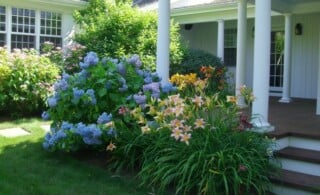 Spring Garden Flower Tips and Suggestions
Spring Garden Flower Tips and Suggestions 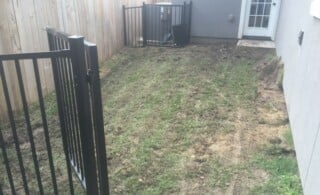 Plan Ahead for a Better Yard
Plan Ahead for a Better Yard 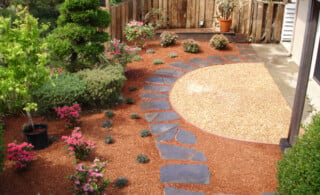 Dry Well Cleaning & Maintenance Tips
Dry Well Cleaning & Maintenance Tips 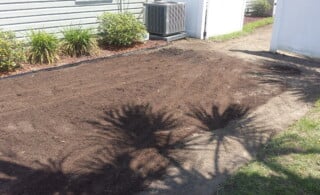 Soil Engineers & Testing
Soil Engineers & Testing 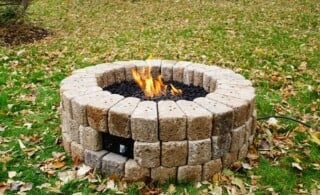 How To: Build A Gas Fire Pit in 10 Steps
How To: Build A Gas Fire Pit in 10 Steps 

Are You Familiar With This Topic? Share Your Experience.